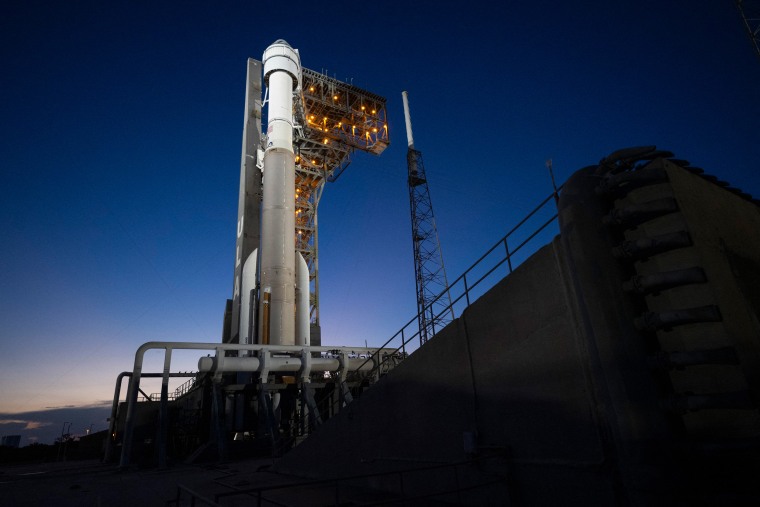NASA and Boeing were forced to stand down from an attempted launch to the International Space Station on Monday because of a last-minute issue that cropped up with a valve on the spacecraft’s rocket.
Boeing’s Starliner capsule had been scheduled to lift off at 10:34 p.m. ET from Florida’s Cape Canaveral Space Force Station on its first crewed test flight. NASA astronauts Barry “Butch” Wilmore and Sunita Williams were on board the capsule and strapped into their seats when the launch attempt was called off, roughly two hours ahead of the planned liftoff.
NASA announced early Tuesday that a second attempt would occur no earlier than Friday.
Mission controllers declared Monday’s launch “scrub” after an anomaly was detected on a valve on United Launch Alliance’s Atlas V rocket, which the Starliner capsule was to ride into orbit.
United Launch Alliance officials said in a post on X that the launch attempt was scrapped “out of an abundance of caution for the safety of the flight and pad crew,” adding that the team needs “additional time to complete a full assessment.”
The analysis will include whether the pressure regulation valve, located on the rocket’s upper stage, needs to be replaced, which may cause a longer delay.
The crewed Starliner flight, when it occurs, will be a crucial final test before NASA can authorize Boeing to conduct routine flights to and from the space station.
Officials at NASA and Boeing have said safety is paramount for the spacecraft’s first flight with humans onboard.
The scrubbed launch is yet another setback for Boeing, which has already dealt with years of delays and budget overruns with its Starliner program. It has fallen significantly behind SpaceX, which has been flying crewed missions to and from the space station for NASA since 2020.

Both SpaceX’s Crew Dragon capsule and Boeing’s Starliner craft were developed as part of NASA’s Commercial Crew Program. The initiative began more than a decade ago, following the retirement of the agency’s space shuttles, to support private companies in building new space vehicles to take astronauts to low-Earth orbit.
Starliner’s first uncrewed flight in 2019 was thwarted by software issues, forcing mission controllers to cut the test short before the vehicle could attempt to rendezvous and dock with the ISS. A second attempt was then delayed several times by fuel valve issues, and it wasn’t until 2022 that Boeing was able to carry out a successful uncrewed flight to and from the space station.
